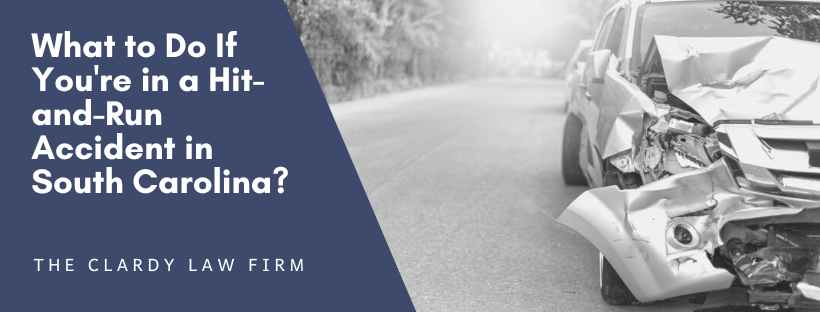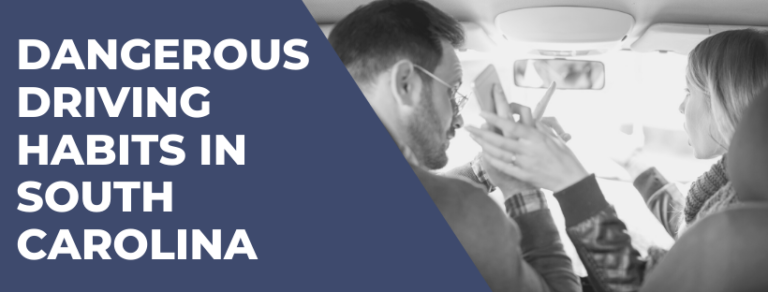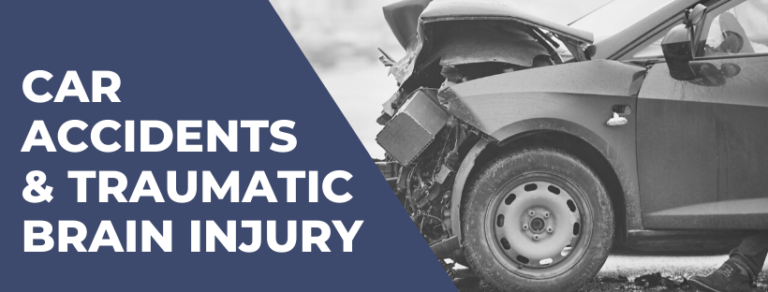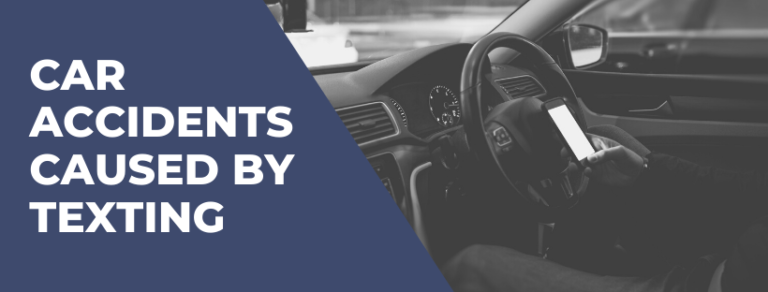In recent years, hit-and-run accidents have become an alarming concern on our roads. These incidents involve a driver fleeing the scene of an accident without stopping to identify themselves or offer assistance to those involved. In 2020 (the latest year statistics are available), South Carolina recorded 3,514 hit-and-run accidents, which amounts to about 1.56% of all accidents in the state.
Hit-and-run accidents leave victims injured and traumatized and pose challenges for law enforcement in identifying and holding the responsible parties accountable.
Being involved in a hit-and-run accident can be a disorienting and distressing experience, but knowing the proper steps to take could help you get the justice you deserve down the line. By understanding your rights and responsibilities, you can protect yourself, gather essential information, and increase the chances of apprehending the responsible driver.
Understanding Hit-and-Run Accidents
Definition and Legal Implications of a Hit-and-Run Accident
A hit-and-run accident is when a driver in a collision leaves the scene without stopping to fulfill their legal obligations. In South Carolina, like in many other jurisdictions, it is a criminal offense to flee the scene of an accident. The legal responsibility for drivers involved in an accident includes stopping their vehicle in a safe location, providing their identification and insurance information to the other party involved, and assisting any injured individuals.
Engaging in a hit-and-run violates traffic laws and demonstrates a lack of responsibility and disregard for the well-being of others. The legal consequences for hit-and-run offenses can be severe, including criminal charges, fines, license suspension, and potential imprisonment. Furthermore, the penalties can be even more severe if the hit-and-run accident results in injuries or fatalities.
Common Reasons Why Drivers Flee the Scene
Understanding the motivations behind hit-and-run accidents can explain why drivers choose to flee instead of fulfilling their legal obligations. Several factors contribute to drivers leaving the scene, including:
- Fear of legal consequences: Drivers may flee out of fear of facing legal repercussions, particularly if they were under the influence of drugs or alcohol, driving without a valid license or insurance, or engaging in other illegal activities at the time of the accident.
- Lack of awareness or understanding: Some drivers may not fully comprehend the legal obligations or consequences of a hit-and-run accident. They may mistakenly believe that leaving the scene will mitigate potential liability.
- Panic or shock: The stress and panic following an accident can cause individuals to act impulsively. They may not have the presence of mind to handle the situation appropriately, leading them to flee out of shock or confusion.
- Prior criminal record: Drivers with a history of criminal behavior or outstanding warrants may choose to evade law enforcement by leaving the scene of an accident.
The Consequences of Leaving the Scene of an Accident in SC
The decision to flee the scene of an accident can have significant consequences for both the driver responsible and the victim. Some of the repercussions of leaving the scene include:
- Criminal charges: Hit-and-run offenses are taken seriously by law enforcement. If the driver responsible is apprehended, they may face criminal charges, ranging from misdemeanors to felonies, depending on the severity of the accident and resulting injuries.
- Civil liability: The driver who caused the accident may still be held financially responsible for the damages and injuries caused, even if they flee the scene. Through legal processes and investigations, victims may be able to identify the responsible party and pursue compensation for their losses.
- Increased penalties: If the hit-and-run accident involves injuries or fatalities, the legal penalties for the responsible driver can escalate significantly. This may include lengthier prison sentences, higher fines, and a more severe impact on their driving record.
Being Prepared in the Event of a Hit-and-Run Accident
Understanding South Carolina’s Traffic Laws and Regulations
While you can’t exactly be prepared for a hit-and-run, you can familiarize yourself with South Carolina’s traffic laws and regulations. Understanding your rights and responsibilities as a driver can empower you to make informed decisions and respond appropriately in case of an accident.
Key aspects to consider include:
- Duty to stop: South Carolina law requires drivers involved in an accident to immediately stop their vehicle at the scene or as close to it as possible without obstructing traffic.
- Providing information: If the accident involves property damage, drivers must exchange identification and insurance information with the other party. If there are injured individuals, rendering reasonable assistance and notifying emergency services are also mandatory.
- Reporting accidents: In South Carolina, drivers must report any accident resulting in injuries, death, or property damage exceeding $1,000 to local law enforcement within 15 days, though we recommend contacting them immediately. This includes hit-and-run accidents.
By understanding these laws, you can better protect your rights and fulfill your legal obligations in the event of a hit-and-run in South Carolina.
Carrying Proper Insurance Coverage
Insurance coverage is another crucial aspect to consider. South Carolina law requires all drivers to carry a minimum of liability insurance, which covers damages and injuries caused to others in an accident.
To protect yourself in case of a hit-and-run, consider the following:
- Uninsured Motorist Coverage (UM): UM coverage is optional in South Carolina but highly recommended. This coverage provides protection if you are involved in an accident with an uninsured or hit-and-run driver. It helps cover medical expenses, lost wages, and other damages you may sustain.
- Underinsured Motorist Coverage (UIM): UIM coverage is also optional but can be invaluable in a hit-and-run scenario. It provides additional coverage if the responsible driver has insurance, but their coverage is insufficient to compensate you for your losses fully.
Review your insurance policy and consider speaking with your insurance agent to ensure you have adequate coverage to protect yourself in a hit-and-run accident.
Equipping Your Vehicle with Dashcams or Surveillance Systems
One proactive step to prepare for a hit-and-run accident is installing a dashcam or surveillance system in your vehicle. Dashcams are small cameras mounted on your dashboard or windshield to capture video footage of the road ahead. On the other hand, surveillance systems provide broader coverage by recording activity around your vehicle.
These devices can serve as valuable evidence in hit-and-run cases, capturing details such as the license plate number or a description of the vehicle involved. The footage can help law enforcement identify the responsible driver and improve your chances of seeking justice and recovering damages.
Investing in a reliable dashcam or surveillance system, and ensuring it is properly installed and maintained, can be a proactive measure to enhance your preparedness in case of a hit-and-run accident.
Immediate Actions to Take
1. Stay Calm and Ensure Personal Safety
In the immediate aftermath of a hit-and-run accident, remaining calm and prioritizing your safety is crucial. Take a moment to collect yourself and assess any injuries you or your passengers may have sustained. If it is safe to do so, move your vehicle out of the flow of traffic to prevent further accidents or hazards.
2. Gather as Much Information as Possible
When involved in a hit-and-run accident, gathering as much information as possible becomes vital for identifying the responsible driver. Try to remember and document the following details:
- Description of the vehicle involved: Note down the make, model, color, and any distinguishing features of the vehicle that struck you.
- License plate number, if visible: If you can see or remember the license plate number of the other vehicle, write it down or take a photo if possible.
- Description of the driver: If you had a glimpse of the driver, note any distinguishing characteristics such as their appearance, clothing, or other details that may help identify them.
3. Document the Accident Scene
Preserving evidence from the accident scene is crucial for both law enforcement and insurance purposes. Take the following steps:
- Take photos of vehicle damage and the surrounding area: Use your smartphone or a camera to document the damage to your vehicle and any other vehicles involved. Capture the position of the cars, the point of impact, and any debris on the road.
- Note any witnesses present and collect their contact information: If there were any witnesses to the accident, ask for their names and contact details. Their statements may prove invaluable during the investigation.
4. Call Emergency Services and Report the Incident
Contacting emergency services is essential after a hit-and-run accident, especially if there are injuries. Dial 911 to report the incident. Provide them with accurate information about the location, any injuries, and the details of the hit-and-run. Even if you don’t feel immediately unwell, you should seek medical attention after an accident, as some injuries will present themselves hours or days later.
5. Inform Your Insurance Company about the Hit-and-Run Accident
Notify your insurance company about the hit-and-run accident as soon as possible. Provide them with all the relevant details and documentation you have collected, including photos, witness statements, and any other evidence that may assist with the investigation. They can guide you through the claims process and help you understand your coverage options.
Seeking Legal Assistance
Reporting the Accident to Law Enforcement
Following a South Carolina hit-and-run accident, it is crucial to report the incident to law enforcement promptly. Contact the local police department or the appropriate law enforcement agency in the town where it happened to file a police report. Provide them with all the information you have gathered, including vehicle descriptions, license plate numbers, witness statements, and other relevant details.
A police report is an official record of the incident, which supports your insurance claim and legal actions you may pursue. Cooperation with law enforcement can significantly contribute to identifying the responsible driver and holding them accountable.
Consulting an Experienced Car Accident Attorney in South Carolina
After a hit-and-run accident in South Carolina, it is highly advisable to consult with an experienced car accident attorney in the local area, such as The Clardy Law Firm. We focus on personal injury law and can provide valuable guidance and support throughout the legal process. Our attorneys can:
- Evaluate your case: Our skilled attorney will review the circumstances of your hit-and-run accident, assess the available evidence, and determine the strength of your case.
- Provide legal advice: Our injury lawyer will explain your rights, guide you through the legal process, and advise you on the best course of action to seek compensation for your losses.
- Assist with investigations: Attorneys have resources and connections that can aid in identifying the responsible driver. They may collaborate with law enforcement agencies and private investigators to gather additional evidence.
- Handle insurance negotiations: If you encounter challenges with your insurance company during the claims process, an attorney can advocate on your behalf and negotiate a fair settlement.
- Pursue legal action: If necessary, our attorney can help you initiate a personal injury lawsuit against the responsible driver to recover damages for medical expenses, property damage, lost wages, and pain and suffering.
Providing Gathered Evidence to the Authorities
Collaborate with law enforcement and your attorney, and provide them with all the evidence you have collected, including photographs, witness statements, and other relevant documentation. This evidence can aid their investigation and increase the chances of identifying and apprehending the responsible driver.
Working closely with legal professionals ensures that your rights are protected, and the appropriate legal actions are taken to seek justice and compensation for your losses.
Dealing with Insurance Companies
Contacting Your Insunrace Company and Filing a Claim
After a hit-and-run accident, inform your insurance company about the incident. Follow these steps when filing a claim:
- Provide accurate information: Clearly explain the details of the hit-and-run accident, including the date, time, location, and information about the other vehicle involved.
- Share gathered evidence: Provide your insurance company with any evidence you have collected, such as photographs, witness statements, and police reports. This documentation can support your claim.
- Document your losses: Keep records of medical expenses, property damage, and other losses you incur from the hit-and-run accident. Maintain receipts, medical bills, and repair estimates as evidence of your damages.
- Follow their instructions: Your insurance company may have specific instructions for the claims process. Follow their guidance, provide requested documentation promptly, and communicate with your claims adjuster.
Uninsured Motorist Coverage (UM) and Underinsured Motorist Coverage (UIM)
If you have purchased UM or UIM coverage as part of your insurance policy, these coverages can play a significant role in recovering compensation after a hit-and-run accident. UM coverage can help compensate for damages when the responsible driver is uninsured, while UIM coverage applies when the responsible driver’s insurance is insufficient to cover your losses.
Review your policy to understand the limits and terms of your UM and UIM coverage. Consult with your insurance agent or attorney if you have any questions or need clarification.
Cooperating with Your Insurance Company’s Investigation
Throughout the claims process, cooperate with your insurance company’s investigation into the hit-and-run accident. Provide them with the necessary information and assist them in any way possible. This cooperation helps expedite the resolution of your claim and ensures you receive the compensation you are entitled to.
However, insurance companies may minimize their liability or undervalue your claim. If you encounter difficulties or feel your claim is not handled fairly, consider consulting with a personal injury lawyer knowledgeable in road traffic accidents and insurance claims. They can advocate for your rights and negotiate on your behalf to ensure a fair settlement.
Recovering Damages and Seeking Justice
Identifying Potential Sources of Compensation
Recovering damages after a hit-and-run accident can be challenging, especially when the responsible driver is not immediately identified. However, there may be alternative sources of compensation to explore:
Uninsured Motorist Coverage (UM): If you have UM coverage as part of your insurance policy, it can compensate for your medical expenses, property damage, and other losses resulting from the hit-and-run accident. Your insurance company would step in as a substitute for the uninsured or unknown driver.
Crime victim compensation programs: Some states, including South Carolina, have crime victim compensation programs that provide financial assistance to victims of violent crimes, including hit-and-run accidents. These programs may cover medical expenses, counseling services, lost wages, and other eligible costs.
Identifying third parties: In some instances, there may be other parties indirectly involved in the hit-and-run accident who could be held liable. For example, if a negligent property owner fails to provide adequate security in an area where the accident occurred, they may share responsibility for the incident.
Pursuing a Personal Injury Lawsuit
If the responsible driver is identified, you may have the option to pursue a personal injury lawsuit to seek additional compensation beyond what is provided by insurance coverage. Consult with an experienced personal injury lawyer here at Clardy Law in South Carolina to evaluate the viability of a lawsuit based on the specific circumstances of your case.
A personal injury lawsuit can help you recover damages for medical expenses, pain and suffering, lost wages, and other losses resulting from the accident. Your attorney will guide you through the legal process, gather evidence, negotiate with insurance companies, and represent your interests in court if necessary.
Working with Law Enforcement to Identify the Responsible Party
Cooperating with law enforcement is crucial in hit-and-run cases to identify and apprehend the responsible driver. Provide all the information, evidence, and documentation you have gathered to the investigating officers. They will conduct a thorough investigation to identify the hit-and-run driver, utilizing resources such as witness statements, surveillance footage, and forensic analysis.
By working closely with law enforcement, you contribute to the efforts to hold the responsible party accountable and bring them to justice. The identification and apprehension of the hit-and-run driver not only serves your interests but also helps protect the community from potentially dangerous individuals.
Prevention and Awareness
Promoting Safe Driving Practices
One of the most effective ways to reduce hit-and-run accidents is by promoting safe driving practices. This includes:
- Obeying traffic laws: Adhere to speed limits, stop signs, traffic signals, and other rules of the road. Following these regulations can help prevent accidents and minimize the likelihood of drivers feeling compelled to flee the scene.
- Avoiding distractions: Distracted driving is a significant contributor to accidents. Avoid using electronic devices, eating, or engaging in other activities diverting your attention from the road.
- Maintaining a safe distance: Keep a safe distance from the vehicle ahead of you to allow for sufficient reaction time in case of sudden stops or emergencies.
- Using turn signals: Signal your intentions when changing lanes or making turns to ensure other drivers are aware of your actions.
By promoting safe driving practices, we can create a culture of responsibility and awareness, reducing the number of hit-and-run accidents in South Carolina.





